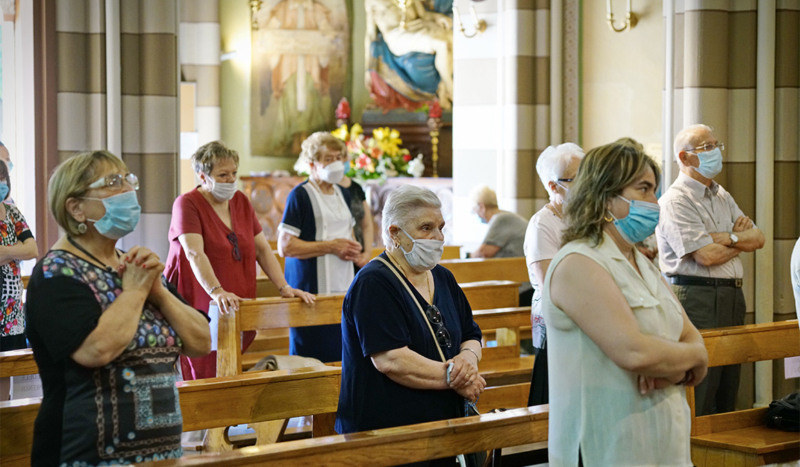
MikeDotta / Shutterstock
CV NEWS FEED // The COVID-19 pandemic prompted significant operational changes within the Catholic Church, affecting liturgical practices, evangelization efforts, and Catholic education. Over the past five years, parishes and dioceses have implemented new strategies to maintain sacramental life and community engagement while addressing ongoing challenges, Angelus News reports.
During lockdowns, many parishes moved quickly to offer online Masses and virtual prayer groups to maintain connections with parishioners. Some churches also introduced initiatives such as “drive-by” confessions and adoration, allowing the faithful to receive sacraments while adhering to public health guidelines, according to the report.
At St. Mel’s Parish in Woodland Hills, California, drive-by Eucharistic Adoration drew unexpectedly large crowds, with vehicles lined up for more than half a mile, the outlet states.
“People waited for over an hour to come through in cars, even people who weren’t Catholic,” Father Steve Davoren, the parish’s pastor, told Angelus News. “I think the key for us is that we never closed. We were there for them in their time of need. You need to stay connected.”
Some parishes launched ministries to welcome back those who had fallen away. St. Mel’s introduced “Landings,” a program designed to provide a “nice, safe place” for returning Catholics to reconnect over a shared meal.
Angelus News adds that Catholic schools adapted by offering hybrid and in-person learning models ahead of many public schools, ensuring continued academic instruction. These efforts contributed to a 3.7% increase in Catholic school enrollment during the 2020-2021 academic year. This trend has remained stable, with many families continuing to choose Catholic education.
“Catholic schools repurposed gyms, all-purpose rooms, and outdoor spaces to accommodate social distancing, ensuring the health and safety of students and staff while maintaining a sense of normalcy,” BeeJae Visitacion, communications director of the National Catholic Educational Association, told Angelus News.
As CatholicVote previously reported, Mass attendance, which declined sharply during the pandemic, has rebounded to near pre-pandemic levels, according to a 2023 study by the Center for Applied Research in the Apostolate (CARA).
The pandemic permanently affected certain liturgical practices, with some dioceses dropping the Sign of Peace entirely, and no longer offering reception of the Precious Blood during Communion.
However, some dioceses have faced challenges in reviving participation in ministries. Bishop Louis Tylka of Peoria, Illinois, told Angelus that many longtime extraordinary ministers of Holy Communion are elderly and hesitant to return.
“It’s incumbent on you to invite young people — and older people — to serve,” he said.
The pandemic also highlighted the importance of digital evangelization, Angelus News reports, leading to the continued use of livestreamed Masses and online faith formation programs. Some parishes report that individuals exploring Catholicism initially engaged through these digital platforms before attending in person.
Bishop John Stowe of Lexington, Kentucky, stated that ministering to the sick remained a challenge for years after the pandemic began.
“Hospital ministry didn’t fully open up until [2023],” he said.
The article states that another ongoing challenge is re-engaging parishioners who have not returned to regular Mass attendance. Matthew Manion, a professor of church management at Villanova University, noted that some donors and attendees have not come back, but those who remain are giving more.
Moving forward from the pandemic, parishes are focusing on in-person worship, evangelization, and strengthening Catholic education to support long-term growth.
Father Ismael Robles of St. John the Baptist Parish in Baldwin Park, California, told the outlet that the key to rebuilding after the pandemic is boldness.
“Sometimes in life we have to be bold and make important decisions,” he said. “If those are from God, he will honor them, and we will see the fruits.”

